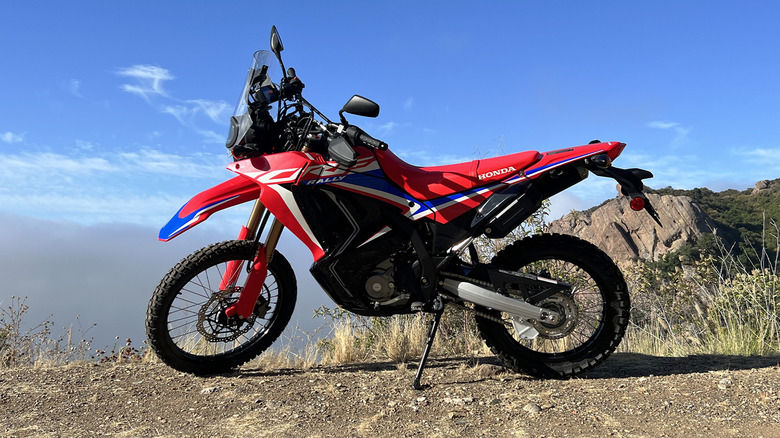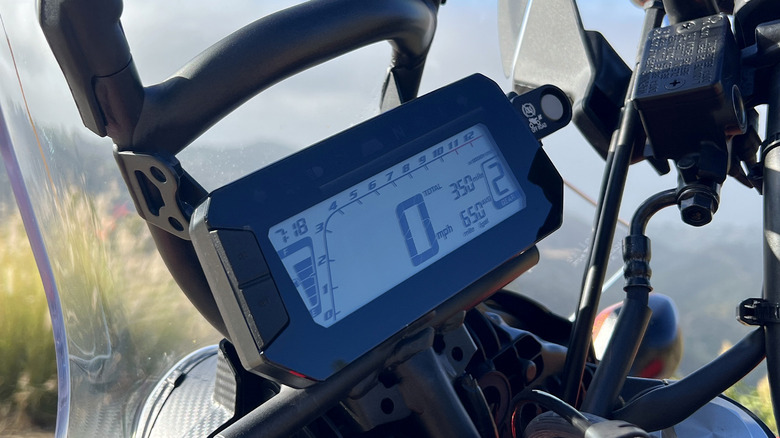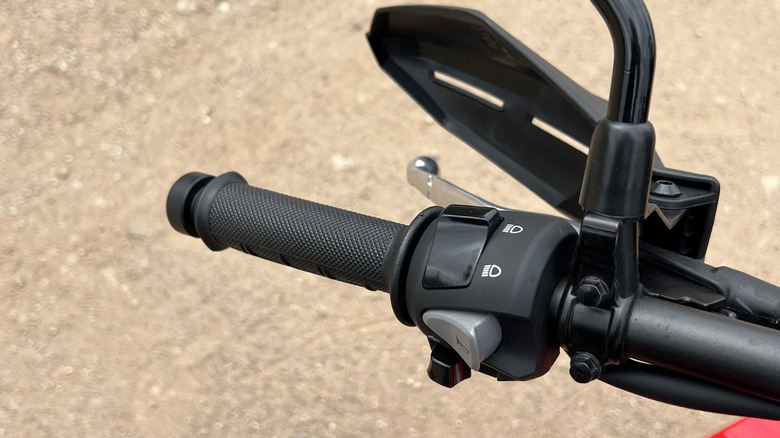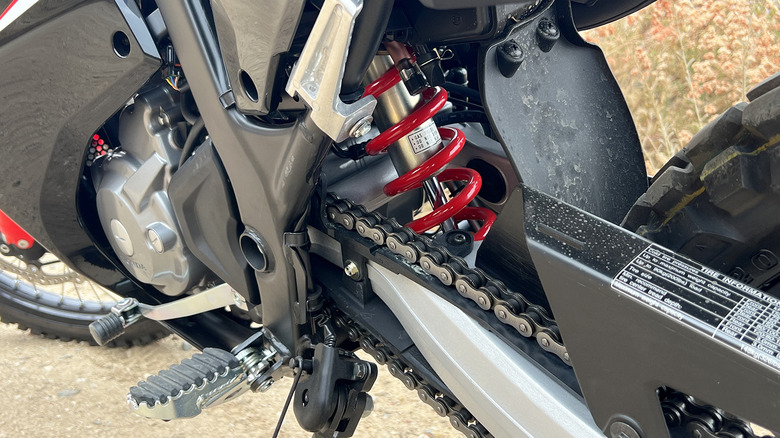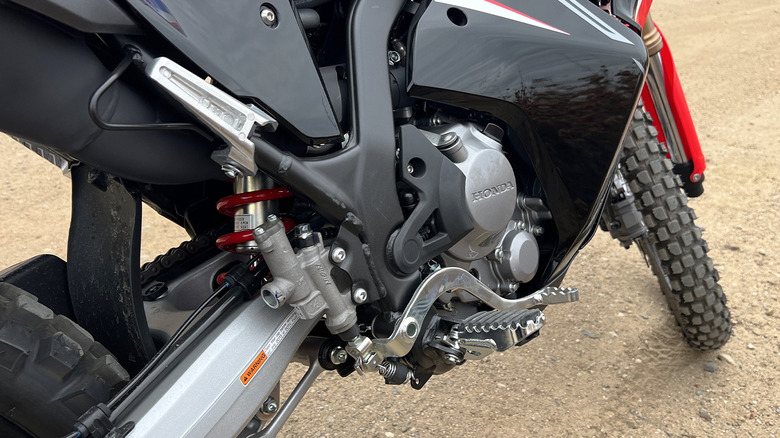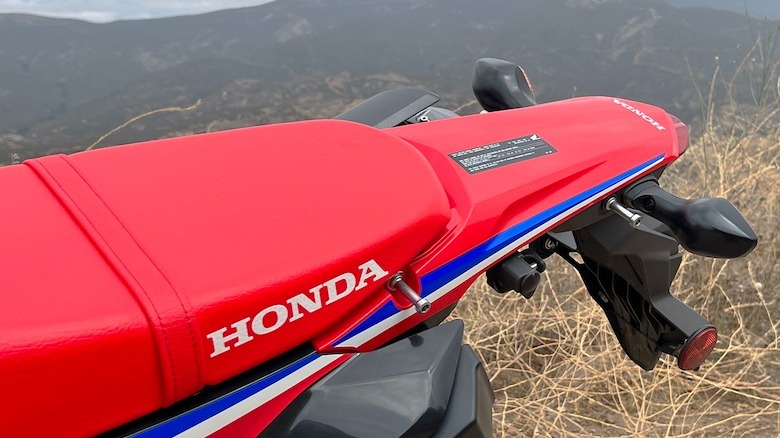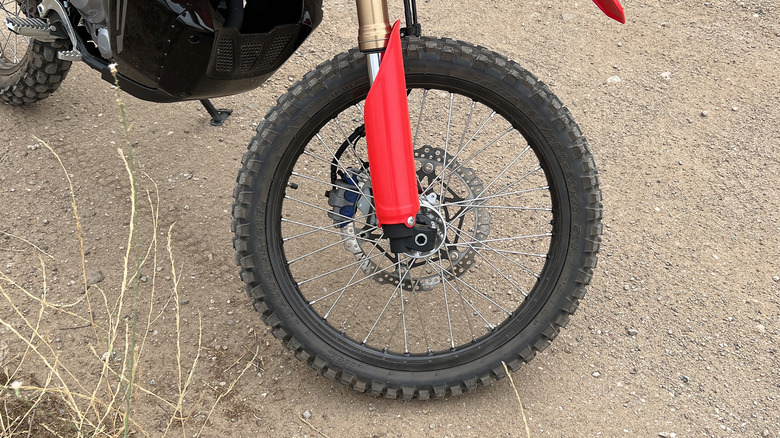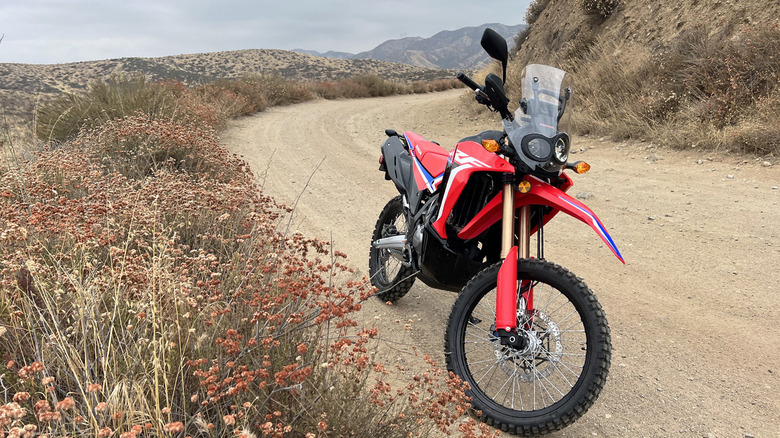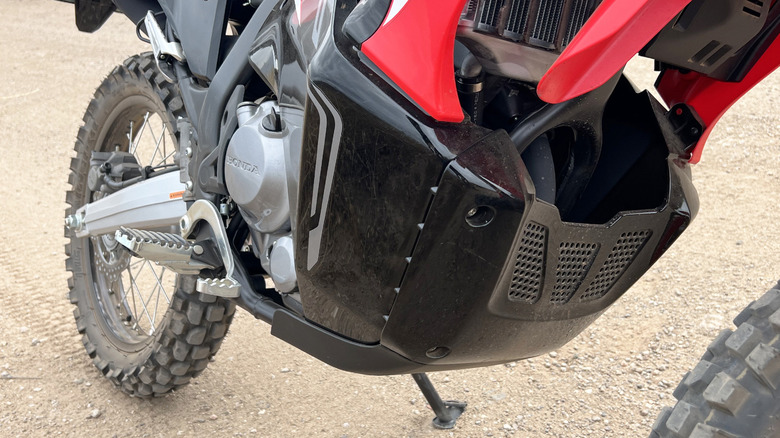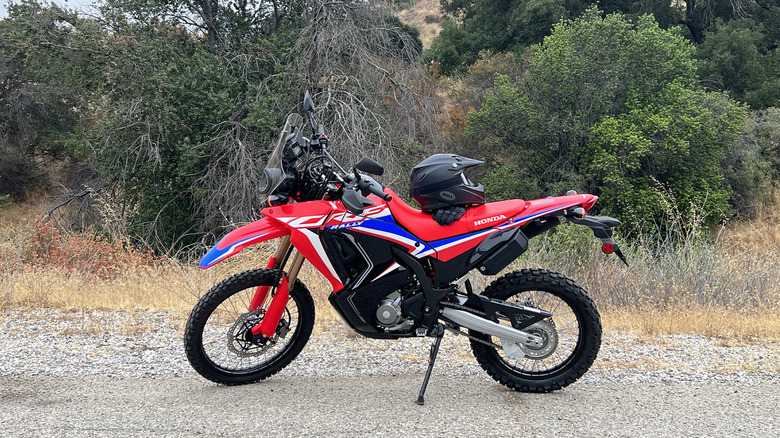2023 Honda CRF300L Rally Review: The Dual-Sport For Real ADV Rides
- Affordable dual-sport with ADV aspirations
- Rally trim gets a 3.1-gallon gas tank
- Just enough power for highway speeds
- Perfect for commuting
- More power would definitely help
- ADV-inspired windscreen is not adjustable
- No coolant temp gauge
As the ADV bike industry continues to explode in popularity, the bikes themselves also seem to keep blowing up in terms of power, weight, features, and of course, price. Motorcycle manufacturers will obviously keep building more $30,000-plus bikes if customers keep making those purchases, but bolting on excessive amounts of accessories, gear, and aftermarket upgrades somehow seems to risk losing everything that makes taking a bike on an adventure fun in the first place.
Every manufacturer now clearly needs to commit fully to the ADV segment with multiple models to keep up with the competition catering to urban and rural buyers with adventurous aspirations alike. And Honda offers ADV bikes at a variety of price points and capability ranging from the simple CB500X that I tested earlier this year to the CRF1100L Africa Twin and the new XL750 Transalp. But for real escapist excursions that leave even the road less traveled far behind, the CRF300L dual-sport in Rally trim convinced me that a dual-sport with only a few minor enhancements may just be the best ADV bike for your buck.
Rally upgrades for the CRF300L
The Rally adds a few features that add only a few pounds to the base CRF300L, with the same single-cylinder engine displacing only 286 cubic centimeters. Output comes in around 27 horsepower, so neither the base bike nor the Rally ever feel particularly fast—unless compared to the XR150L that Honda recently brought to the American market. On the 150, I found barely enough power to hit highway speeds at full throttle. On the Rally, only gapping cars off the line presented something of a challenge, occasionally requiring a bit of a jump at a greenlight. Luckily, first gear's short ratio helps with low-end grunt before shifting into second allows for more of a lope up to cruising pace.
The XR150L happily handles full twist at all times—in a fun way—but on the CRF300L, full throttle about 80% of the time gets the job done. The Rally's additional weight versus the base CRF300L comes thanks mostly to a larger fuel tank, at 3.4 gallons including the 0.6-gallon reserve versus the 2.1 gallons on the base. More bodywork around the tank also adds to the rally aesthetic, as does a taller windscreen for reducing buffeting effects at higher highway speeds.
Riding around in town
Riding the Rally around town, where eminent daily rider capabilities emerge immediately, navigating traffic and turns requires little more than a hip wiggle here and there rather than countersteering and leaning hard. Not that the Rally's knobby tires particularly want to ride edges anyway, but the 331-pound wet weight also explains part of the sensation, as does an upright and forward riding position more akin to typical dirt bikes than most city commuters.
Blasting out onto highways and freeways hoping to escape the rat race requires truly wringing the peppy single all the way out towards that 10,500-RPM redline, just to keep up with traffic. I managed to hit 91 miles per hour on the freeway almost redlining in sixth gear, but only just barely, while hustling down the steepest section of the Sepulveda Pass in a full tuck behind the Rally windscreen (and probably with a tailwind helping a fair amount, too). On flat roads, just over 80 mph maxes out the aerodynamically inefficient bodywork and significantly less-than-beefy engine.
At those speeds, though, crosswinds get sketchy quite quickly, catching the 21-inch front tire like a pizza box, plastic body cladding starting to flex a bit, and 18-inch rear tire wandering just enough to cause some serious snaking around in the lane. The matching pair of iRE Trail S GP tires, which Honda chose to split the gap between city and trail riding, definitely don't help and, for many riders, will probably just bridge the gap between buying the bike and deciding on new rubber more specifically catered to personal riding plans.
Dual-sport suspension catered to a capable commuter
Tires serve as any bike or car's first suspension component, but the Rally's shock dampers provide plenty of cushioning with a matching 10.2 inches of travel from the forks and adjustable pre-load rear coilover. Speed bumps all but disappear at speeds over 10 miles per hour, cracks in the road become indistinguishable (partially thanks to the engine buzz), and rougher roads smooth out with ease.
If anything, I might prefer slightly firmer forks on asphalt, since I noticed a bit of tire slip when lifting out of moderate lean angles as the centrifugal force abates and allows the dampers to expand again. The forks also allow for a good amount of nose dive when braking hard—a testament to the efficacy of a single 296 millimeter front disc brake clamped by a two-piston caliper, too.
I never reached a full ABS stop on this ABS-equipped bike, which does include a button to the right of the digital gauge screen that turns off ABS for the rear 220 milimeter disc to allow a bit more controlled skidding when venturing out into the dirt. The tiny gauges display speed, revs, gear selection, and fuel level in the Rally's larger tank, though I was disappointed not to find a coolant temperature reading given the bike's propensity for high revving during just about any type of riding. Apparently my inner thighs needed to keep tabs on potential overheating instead.
Typical Honda mechanical quality
If the small screen and engine get the job done, just barely, excellent componentry for the rest of mechanicals matches the high bar expected from Honda. Shifter weight and clutch action controlling the six-speed gearbox can feel a bit light on road, but are perfect for longer rides and hitting the dirt. Rev-matching takes only a tiny throttle blip due to the engine's minimal reciprocating mass and a precise, predictable clutch throw, and the nosedivey brakes allow for excellent modulation on chunked-up roads, too.
One benefit of a liquid-cooled four-stroke fuel-injected single is, undoubtedly, Honda reliability. The Rally never failed to fire right up immediately, even after periods of sitting, and should run a hard life with only regular maintenance required. Honda's one-year warranty can also be extended, for buyers who plan to put on a ton of miles on-road or off.
Tacking on more warranty coverage adds to the entry price for a Rally, though, and a few unavoidable signs of the low price point do crop up. Zip-ties on the handlebars straight from the factory, high wiring that allow for all that front fork travel coming wrapped in beefy rubber bands, and a squared-off seat that probably needs more time to break in all stood out for me.
That high seat measures 35.2 inches above the ground, while the Rally boasts fractionally less ground clearance than a base CRF300L at 10.9 inches. But the riding position and high seat make for excellent visibility in traffic and, with the relatively low weight, shorter riders standing on tippy toes while stopped can probably keep from toppling over pretty easily.
Taking the Rally to Rowher Flats
I felt obliged to test the Rally in some dirt, so I rode out to Rowher Flats Off-Highway Vehicle Area just north of Los Angeles on a cloudy morning—hence the presumable world-record (for a Rally) of 91 mph. But once I left asphalt behind, the Honda got a chance to show off the capabilities that make that dual-sport market.
The single-cylinder engine creates much of the bike's capability off-road. Light but certainly not featherweight, the mill can tend to bog down a bit below 5,000 RPM if riding slowly up even moderate grades. Holding in higher revs never produces enough power to overwhelm traction with twitchy or squirrelly torque delivery, and I noticed a bit of heat starting to radiate into my thighs when not blasting around as fast as possible. Whether the engine just needs more airflow or higher revs to keep the coolant flowing through the radiator faster, I can't say.
Unexpectedly comfortable
The suspension sufficiently smoothed out washboards on Rowher's occasionally graded entry road, with just a bit of rattle on the worst sections. Onto rockier trails at slower speeds, we popped up and down little sections that should have felt lurchy, all without concern. And I probably should have aired down the tires, but for only a couple of hours in dirt, I felt disinclined to carry along a compressor or CO2 cartridges. For a longer journey, especially while hauling around any gear that adds weight, airing down would undoubtedly help with both grip and ride quality.
The Rally's square pegs let me kick the weight around well, whether seated or standing, but at 6'1" with long legs and a short torso, I found the handlebars a couple of inches too low while fully up and out of the saddle—not something entirely impossible to swap out, but surprising for a dual-sport with such decidedly dirt-focused characteristics. Otherwise, the ergonomics proved perfect for a long day of highway and adventure riding, with minimal knee or back discomfort despite fighting winds and rough roads much of the way. An adjustable windscreen might make a difference for riders of my size or taller, too, since hunching over just a bit almost entirely prevented my helmet from getting hit by gusts at higher speeds.
The real adventure starts here
I put somewhere around a couple of hundred miles on the Rally and used around three-quarters of a tank of gas, typically averaging over 60 miles per gallon according to the onboard computer (that math checks out solidly, given the 3.1-gallon fuel capacity). And though I returned the bike to Honda embarassed that I managed to only get it a bit dirty due to the moist morning out at Rowher, the Rally left me totally convinced that a new concept for adventure bikes exists in this exploding market—by getting back into the tried-and-true dual-sport category.
But I always preferred lightweight camping that involves hauling as little gear as possible, in direct opposition to the increasingly Instagram-friendly overlanding crowd who want to get out into the wild while bringing all the comforts of home along with them. That typically requires a massive and overladen rig strapped to the brim with every accessory, to go with the de rigeuer rooftop tent and trailer.
In contrast to overdone overlanders or ADV bikes, the Rally keeps thing simpler, even coming in only one color scheme: red with black, to highlight those off-roady aspects. Cargo hooks for bungee cords or to serve as a base for a rear bag mount come in handy, but buying a top case accessory built specifically for the Rally costs around $300 plus mounts. A more substantial skid plate for more hardcore riders than I might also fit into the mix.
Sticking with a simple solution
Damage is, after all, a serious concern when venturing off the beaten path. Does anyone really want to take a full-loaded BMW GS pushing 800 pounds with panniers packed to the brim out onto the dirt and risk dropping it? What then, when even two friends can't help pick the bike back up?
My time with the Rally revealed more about my mindset surrounding the ADV craze, which leans more towards cruise control, high windscreens, and plush seats to make highway cruising and the occasional dirt road a bit more comfortable on long days in the saddle. Maybe my concept of adventure just involves something more in line with escaping overpopulated parks and trails, but the popularity of the Rally among my friends and acquaintances suggests that Honda also believes simpler bikes like the CB500X and CRF300L Rally can fill a market gap for daily commuters and real adventuring alike.
The entry price certainly enhances the appeal of the dual-sport Rally, with a starting sticker of $6,149 (plus $300 for the ABS on my bike and an additional $600 in destination and freight). Of course, trading power and weight for maneuverability in the dirt means that a true dirt bike might do the job better when the road gets roughest—but then the trip home requires a truck or trailer. With the CRF300L, Honda seems to say that leaving the daily grind behind can take place on a daily rider, without needing to step up into another class of displacement, weight, or cost.
